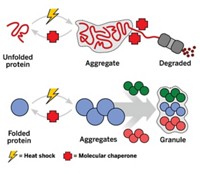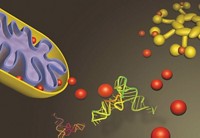Advertisement
Grab your lab coat. Let's get started
Welcome!
Welcome!
Create an account below to get 6 C&EN articles per month, receive newsletters and more - all free.
It seems this is your first time logging in online. Please enter the following information to continue.
As an ACS member you automatically get access to this site. All we need is few more details to create your reading experience.
Not you? Sign in with a different account.
Not you? Sign in with a different account.
ERROR 1
ERROR 1
ERROR 2
ERROR 2
ERROR 2
ERROR 2
ERROR 2
Password and Confirm password must match.
If you have an ACS member number, please enter it here so we can link this account to your membership. (optional)
ERROR 2
ACS values your privacy. By submitting your information, you are gaining access to C&EN and subscribing to our weekly newsletter. We use the information you provide to make your reading experience better, and we will never sell your data to third party members.
Biological Chemistry
Stressed Plants Destroy Damaged Chloroplasts
Plant Biology: A ubiquitin ligase prompts cells to destroy organelles that govern photosynthesis
by Judith Lavelle
October 26, 2015
| A version of this story appeared in
Volume 93, Issue 42
In stressful conditions such as drought and high temperature, a plant cell’s chloroplasts can become damaged and produce harmful reactive oxygen species (ROS). Researchers at the Salk Institute have uncovered that plants produce an enzyme to signal cells to degrade ROS-producing chloroplasts before they do too much damage (Science 2015, DOI: 10.1126/science.aac7444). The team led by Jesse D. Woodson and Joanne Chory first created a strain of Arabidopsis thaliana sensitive to photooxidative stress. With transmission electron microscopy the researchers observed cells degrading damaged chloroplasts, which leak out their contents. With these green organelles destroyed, young plants never became green. The researchers then bred a second mutant plant that also underwent photooxidative stress but did turn green, indicating that chloroplasts were damaged but not destroyed. A genetic screen of these plants revealed a mutation disabling an enzyme called plant U-box 4 E3 ubiquitin ligase, suggesting that chloroplast degradation depends on that enzyme acting as a stress signal. Understanding this mechanism may help scientists create better drought- or temperature-resistant plants.





Join the conversation
Contact the reporter
Submit a Letter to the Editor for publication
Engage with us on Twitter